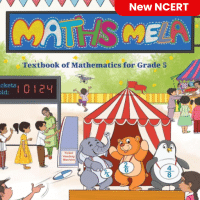Class 5 Exam > Class 5 Questions > When the Moon is partly hidden by the dark sh...
Start Learning for Free
When the Moon is partly hidden by the dark shadow of the Earth, it is called:
- a)A partial lunar eclipse
- b)A partial solar eclipse
- c)A full lunar eclipse
- d)A full solar eclipse
Correct answer is option 'A'. Can you explain this answer?
Verified Answer
When the Moon is partly hidden by the dark shadow of the Earth, it is ...
The correct answer is A: A partial lunar eclipse
Explanation:
Here is a detailed explanation of why the correct answer is A: A partial lunar eclipse.
- A lunar eclipse occurs when the Earth passes between the Sun and the Moon, casting a shadow on the Moon.
- When the Moon is partly hidden by the dark shadow of the Earth, it is called a partial lunar eclipse.
- During a partial lunar eclipse, only a portion of the Moon enters the Earth's shadow.
- The rest of the Moon remains visible as the Earth's shadow covers only a part of it.
- The visibility of the partial lunar eclipse depends on the alignment of the Earth, Moon, and Sun.
- In contrast, a full lunar eclipse occurs when the entire Moon passes through the Earth's shadow, giving it a reddish hue.
- A partial solar eclipse, on the other hand, occurs when the Moon partially blocks the Sun's light from reaching the Earth.
- During a partial solar eclipse, the Moon covers only a part of the Sun, resulting in a partial darkening of the sky.
In conclusion, when the Moon is partly hidden by the dark shadow of the Earth, it is called a partial lunar eclipse.
View all questions of this test
Explanation:
Here is a detailed explanation of why the correct answer is A: A partial lunar eclipse.
- A lunar eclipse occurs when the Earth passes between the Sun and the Moon, casting a shadow on the Moon.
- When the Moon is partly hidden by the dark shadow of the Earth, it is called a partial lunar eclipse.
- During a partial lunar eclipse, only a portion of the Moon enters the Earth's shadow.
- The rest of the Moon remains visible as the Earth's shadow covers only a part of it.
- The visibility of the partial lunar eclipse depends on the alignment of the Earth, Moon, and Sun.
- In contrast, a full lunar eclipse occurs when the entire Moon passes through the Earth's shadow, giving it a reddish hue.
- A partial solar eclipse, on the other hand, occurs when the Moon partially blocks the Sun's light from reaching the Earth.
- During a partial solar eclipse, the Moon covers only a part of the Sun, resulting in a partial darkening of the sky.
In conclusion, when the Moon is partly hidden by the dark shadow of the Earth, it is called a partial lunar eclipse.
Most Upvoted Answer
When the Moon is partly hidden by the dark shadow of the Earth, it is ...
Understanding Lunar Eclipses
When the Moon passes through the Earth's shadow, it creates a phenomenon known as a lunar eclipse. The type of eclipse that occurs when only a portion of the Moon is obscured by the Earth's dark shadow is specifically called a partial lunar eclipse.
What is a Partial Lunar Eclipse?
- In a partial lunar eclipse, only part of the Moon enters the Earth's umbra, which is the darkest part of its shadow.
- This results in a portion of the Moon appearing darkened while the rest remains illuminated by sunlight.
How Does a Lunar Eclipse Occur?
- A lunar eclipse can only take place during a full moon when the Earth is positioned directly between the Sun and the Moon.
- If the alignment is not perfect, the Earth’s shadow only partially covers the Moon, leading to a partial lunar eclipse.
Comparison with Other Eclipses
- In contrast, a full lunar eclipse occurs when the entire Moon passes through the Earth’s shadow, resulting in a completely darkened Moon.
- A partial solar eclipse happens when the Moon partially blocks the Sun, while a full solar eclipse occurs when the Moon completely covers the Sun.
Conclusion
Therefore, the correct answer to the question is option 'A' - A partial lunar eclipse. This phenomenon is a fascinating aspect of our celestial mechanics, showcasing the dynamic relationships between the Earth, Moon, and Sun.
When the Moon passes through the Earth's shadow, it creates a phenomenon known as a lunar eclipse. The type of eclipse that occurs when only a portion of the Moon is obscured by the Earth's dark shadow is specifically called a partial lunar eclipse.
What is a Partial Lunar Eclipse?
- In a partial lunar eclipse, only part of the Moon enters the Earth's umbra, which is the darkest part of its shadow.
- This results in a portion of the Moon appearing darkened while the rest remains illuminated by sunlight.
How Does a Lunar Eclipse Occur?
- A lunar eclipse can only take place during a full moon when the Earth is positioned directly between the Sun and the Moon.
- If the alignment is not perfect, the Earth’s shadow only partially covers the Moon, leading to a partial lunar eclipse.
Comparison with Other Eclipses
- In contrast, a full lunar eclipse occurs when the entire Moon passes through the Earth’s shadow, resulting in a completely darkened Moon.
- A partial solar eclipse happens when the Moon partially blocks the Sun, while a full solar eclipse occurs when the Moon completely covers the Sun.
Conclusion
Therefore, the correct answer to the question is option 'A' - A partial lunar eclipse. This phenomenon is a fascinating aspect of our celestial mechanics, showcasing the dynamic relationships between the Earth, Moon, and Sun.

|
Explore Courses for Class 5 exam
|

|
Question Description
When the Moon is partly hidden by the dark shadow of the Earth, it is called:a)A partial lunar eclipseb)A partial solar eclipsec)A full lunar eclipsed)A full solar eclipseCorrect answer is option 'A'. Can you explain this answer? for Class 5 2025 is part of Class 5 preparation. The Question and answers have been prepared according to the Class 5 exam syllabus. Information about When the Moon is partly hidden by the dark shadow of the Earth, it is called:a)A partial lunar eclipseb)A partial solar eclipsec)A full lunar eclipsed)A full solar eclipseCorrect answer is option 'A'. Can you explain this answer? covers all topics & solutions for Class 5 2025 Exam. Find important definitions, questions, meanings, examples, exercises and tests below for When the Moon is partly hidden by the dark shadow of the Earth, it is called:a)A partial lunar eclipseb)A partial solar eclipsec)A full lunar eclipsed)A full solar eclipseCorrect answer is option 'A'. Can you explain this answer?.
When the Moon is partly hidden by the dark shadow of the Earth, it is called:a)A partial lunar eclipseb)A partial solar eclipsec)A full lunar eclipsed)A full solar eclipseCorrect answer is option 'A'. Can you explain this answer? for Class 5 2025 is part of Class 5 preparation. The Question and answers have been prepared according to the Class 5 exam syllabus. Information about When the Moon is partly hidden by the dark shadow of the Earth, it is called:a)A partial lunar eclipseb)A partial solar eclipsec)A full lunar eclipsed)A full solar eclipseCorrect answer is option 'A'. Can you explain this answer? covers all topics & solutions for Class 5 2025 Exam. Find important definitions, questions, meanings, examples, exercises and tests below for When the Moon is partly hidden by the dark shadow of the Earth, it is called:a)A partial lunar eclipseb)A partial solar eclipsec)A full lunar eclipsed)A full solar eclipseCorrect answer is option 'A'. Can you explain this answer?.
Solutions for When the Moon is partly hidden by the dark shadow of the Earth, it is called:a)A partial lunar eclipseb)A partial solar eclipsec)A full lunar eclipsed)A full solar eclipseCorrect answer is option 'A'. Can you explain this answer? in English & in Hindi are available as part of our courses for Class 5.
Download more important topics, notes, lectures and mock test series for Class 5 Exam by signing up for free.
Here you can find the meaning of When the Moon is partly hidden by the dark shadow of the Earth, it is called:a)A partial lunar eclipseb)A partial solar eclipsec)A full lunar eclipsed)A full solar eclipseCorrect answer is option 'A'. Can you explain this answer? defined & explained in the simplest way possible. Besides giving the explanation of
When the Moon is partly hidden by the dark shadow of the Earth, it is called:a)A partial lunar eclipseb)A partial solar eclipsec)A full lunar eclipsed)A full solar eclipseCorrect answer is option 'A'. Can you explain this answer?, a detailed solution for When the Moon is partly hidden by the dark shadow of the Earth, it is called:a)A partial lunar eclipseb)A partial solar eclipsec)A full lunar eclipsed)A full solar eclipseCorrect answer is option 'A'. Can you explain this answer? has been provided alongside types of When the Moon is partly hidden by the dark shadow of the Earth, it is called:a)A partial lunar eclipseb)A partial solar eclipsec)A full lunar eclipsed)A full solar eclipseCorrect answer is option 'A'. Can you explain this answer? theory, EduRev gives you an
ample number of questions to practice When the Moon is partly hidden by the dark shadow of the Earth, it is called:a)A partial lunar eclipseb)A partial solar eclipsec)A full lunar eclipsed)A full solar eclipseCorrect answer is option 'A'. Can you explain this answer? tests, examples and also practice Class 5 tests.

|
Explore Courses for Class 5 exam
|

|
Signup for Free!
Signup to see your scores go up within 7 days! Learn & Practice with 1000+ FREE Notes, Videos & Tests.


















